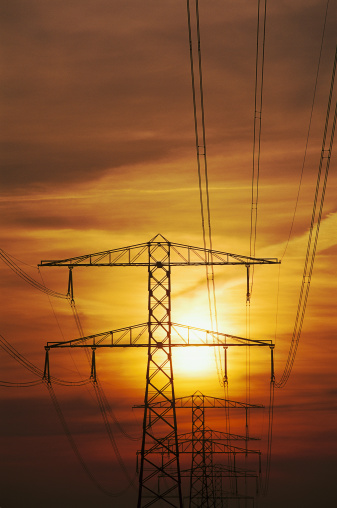 The TransWest Express Transmission (TWE) Project has received its final environmental impact statement (EIS) from the Bureau of Land Management (BLM) and Western Area Power Administration (WAPA).
The TransWest Express Transmission (TWE) Project has received its final environmental impact statement (EIS) from the Bureau of Land Management (BLM) and Western Area Power Administration (WAPA).
The TWE Project, a regional electric transmission system that would add 3 GW of transmission capacity to the western U.S. electric grid, is a 600 kV high-voltage direct-current transmission line engineered with typical lower-visibility lattice structures to complement existing lines in the western landscape. It is designed to deliver about 20,000 GWh per year of clean and sustainable energy to multiple utilities in California, Nevada and Arizona that seek cost-effective supplies of renewable power to provide to their retail customers.
In addition, the TWE Project will create a critical link between renewable resources in the Rocky Mountain and Desert Southwest regions to efficiently transmit energy to utilities in both regions when the wind blows and the sun shines – fostering a more resilient western U.S. power grid while also helping address integration challenges.
As a significant regional transmission line, the TWE Project will create up to 1,000 construction-related jobs each year during the estimated three-year construction period. TransWest has entered into partnering agreements with The International Brotherhood of Electrical Workers and the International Union of Operating Engineers for the development and construction of the TWE Project.
BLM and WAPA say the EIS is a result of more than six years of environmental analysis, public input and collaboration among 50 federal, state and local cooperating agencies. The report informs the public of various factors associated with this transmission line, including its potential ecological, aesthetic, cultural, economic and social effects.
After review of thousands of miles of potential routes, the final EIS also identifies the agencies' preferred alternative from southcentral Wyoming, to the site of a potential interconnection to the existing grid near Delta, Utah, and then to the Marketplace Hub in southern Nevada. The Nevada electricity hub wheels power from the Hoover Dam and other sources and provides interconnections to the California, Nevada and Arizona grids.
Two-thirds of the approximately 730-mile preferred alternative route lies on federal land principally managed by the BLM. The TWE Project follows designated utility corridors and is co-located with existing transmission when possible to avoid and minimize impacts.
WAPA, a power marketing administration within the U.S. Department of Energy (DOE), is supporting the development of the TWE Project. Following the final EIS availability period, BLM and Western each will issue a record of decision that documents the agency's decision pursuant to its unique purpose and need, including any required conditions and stipulations.
A notice of availability of the final EIS from the U.S. Department of the Interior and DOE will appear in the May 1 Federal Register. The notice begins a 30-day availability period.
After the public review period, the agencies will consider granting the project its record of decision, which would grant the TWE Project a right of way across federal land.



